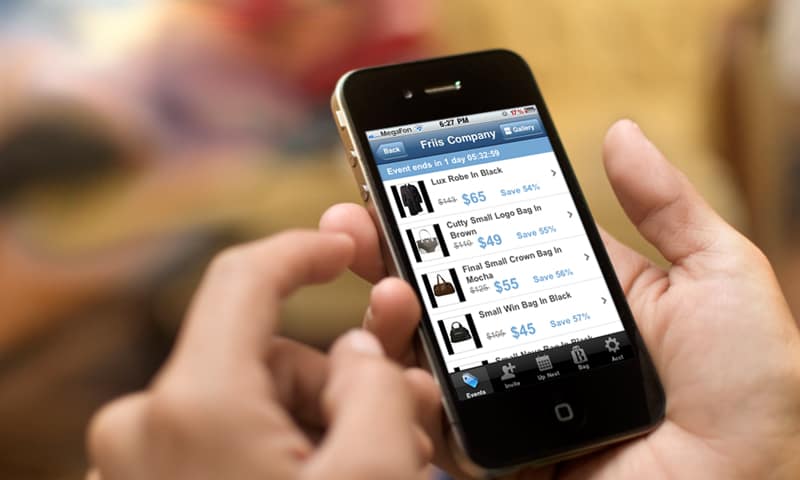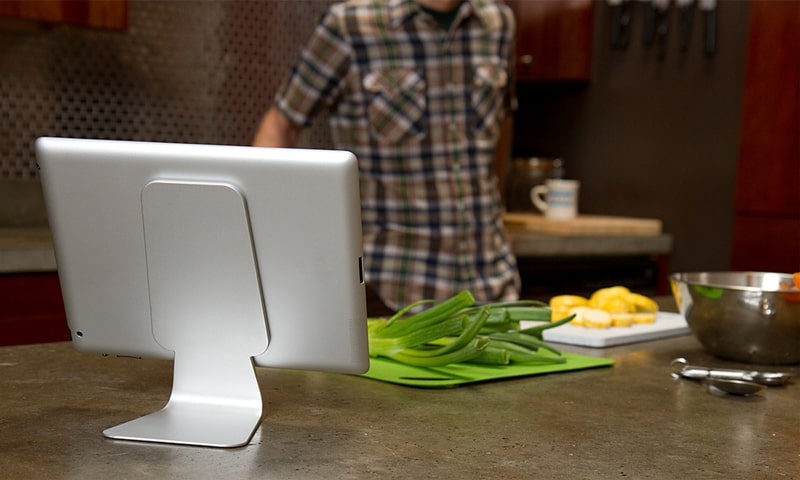How Mobile App Development is Reshaping Retail

IT copywriter
Reading time:
Retail is going mobile. Aiming to increase profit margins and engage more customers, business owners turn to mobile retail app development. Is this the right decision? How can a retailer efficiently use a mobile app?
Taking advantage of mobile apps for retail
Mobile apps can save us from having to carry a bunch of plastic cards. A mobile app is usually at hand and doesn’t take up space in our pockets.
If you have a chain of stores, your customers would enjoy a mobile app with product offers, prices, and store promotions. The app for Holdy Discounter grocery stores has this type of functionality: users can view current specials, read the details of every product, receive news, participate in surveys, and share offers with friends.
Another illustrative example from our best practices will be interesting for owners of E-commerce shops. Using an app for online shopping, customers can buy a wide range of items ranging from clothes, perfume, and handbags to electronic gadgets at a discounted price for a limited space of time. Offers become available via push notifications.

An in-app recommendation system can help you grow the length of the receipt, offering items that are relevant to a customer’s shopping basket. For instance, offering a Bolognese sauce for pasta or a sweatshirt for jeans. These recommendations cannot annoy a customer as they are relevant to their preferences.
Additionally, a mobile app makes the store’s loyalty program more transparent: a user has a personal account, where the number of bonuses and write-off history is available, including previous purchases.
Finally, an app improves the service quality: you are able to quickly receive feedback from customers, analyze the target audience and better understand customer needs.
How apps work for retail
Retail apps can have a variety of features. It depends on what type of retail business you have, what kind of items you sell, and who your customers are. However, the basic mechanics are as follows. A user receives a push notification about the start of sales in the store, they go to the page with the offer and views the details. If they like an item, they add it to the shopping list. If not — they continue looking at specials.
Here’s an example of an app for a Norwegian fashion retailer that we developed.

The app is targeted at youth who follow the latest trends in fashion. App users can view new arrivals to the store and find out about discounts and special offers via notifications. But that isn’t all. This mobile solution for a fashion retailer becomes a style guide as it helps to look through the style gallery. Being integrated with Google Maps, the app directs users to the nearest store locations.
Grocery stores are a special topic for conversation. A mobile app we developed for a European supermarket chain provides delightful opportunities for the customers. Users choose a recipe from the image gallery, the number of people they want to cook for, it makes a shopping list, and calculates the price in accordance with chosen ingredients and the number of guests. Additionally, the app allows them to see video tutorials and share favorite recipes with friends.

Many apps for retailers helps them find and save an item they like, make shopping lists, or send notifications when a customer arrives at the store — thus, users never forget anything. Additional features are nice as well: bonuses for regular purchases, personal reviews about the stores, sharing with friends, and much more.
If your retail business relates to selling some complicated stuff such as instruments or special equipment, then you can try to develop a retail mobile app with some practical tips for easing the choice and use of your goods.
Finally, an app is useful not only for a separate store but also for a big shopping mall. Shopping centers make their apps with reviews of all the retailers they work with. Often these apps include maps as well, so a customer can see where they are on the map and get directions to the required store.
As experts say, customers will use smartphones during shopping more and more often, and taking selfies isn’t the only reason. They will begin with mobile sales and coupons, follow personal recommendations, and pay for goods via digital devices. Thus, retailers should forget their conservative beliefs in offline tools, and think of creating an app for their stores. Finally, it brings you more benefits than you could expect.

